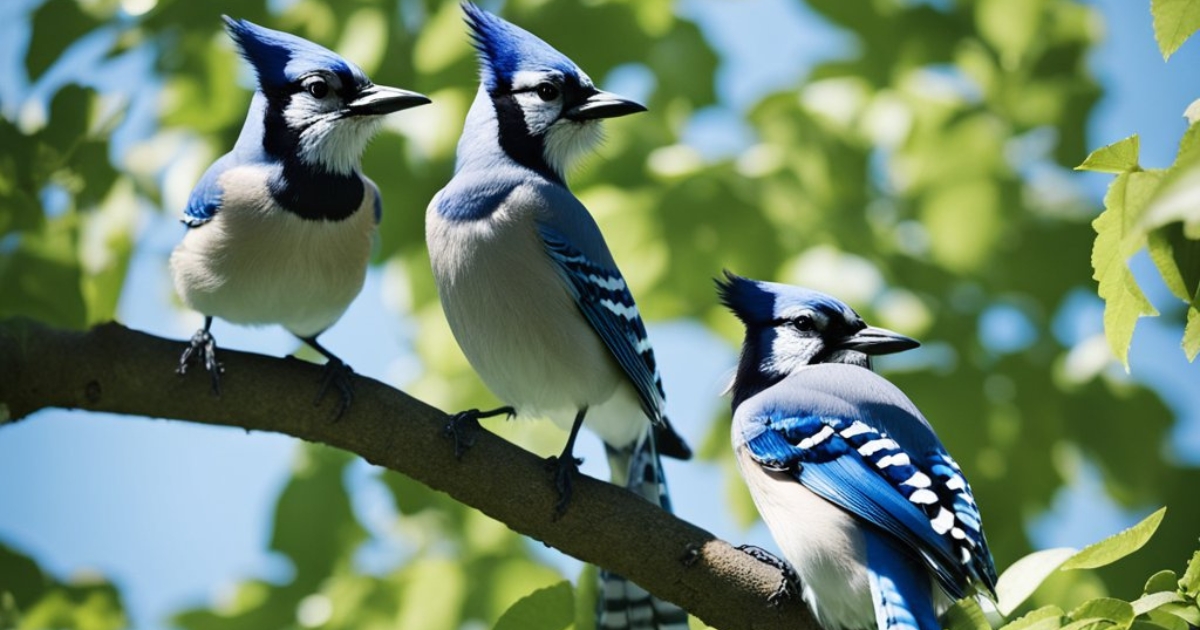Avian enthusiasts know that attracting blue jays to your backyard can provide hours of entertainment and vibrant splashes of color to your outdoor space. If you’re looking to entice these intelligent and striking birds to visit your garden, you’ll need to stock up on their favorite foods. From nuts to fruits, we’ve compiled a list of the top 10 foods that blue jays can’t resist devouring in your backyard.
Sunflower Seeds
Black-oil Variety
Even though Blue Jays are known to enjoy a variety of seeds, one of their favorites is the black-oil sunflower seed. These seeds have a thinner shell, making it easier for the Blue Jays to crack them open and access the tasty kernel inside. Offering black-oil sunflower seeds in your backyard will definitely attract these beautiful birds.
Shelled Seeds
Blackoil sunflower seeds are a great option for feeding Blue Jays as they provide a high source of energy and crucial nutrients. These shelled seeds are full of healthy fats, proteins, and vitamins that are beneficial for the overall health of the Blue Jays. With their easy-to-crack shell, these seeds are a preferred choice for many backyard bird feeders.
Suet
High-fat content
There’s no denying that blue jays are big fans of suet. Why? It’s simple – the high-fat content in suet provides a great source of energy for these birds. During the colder months or breeding season, blue jays rely on foods like suet to stay energized and healthy.
Mixed with seeds
The key to attracting blue jays with suet is to offer a mix that includes seeds. The combination of high-fat suet with the added crunch of seeds makes for a desirable snack that blue jays can’t resist. You’ll have these colorful visitors flocking to your backyard in no time!
Any bird enthusiast knows that suet is a must-have item for attracting a variety of bird species to your backyard. Blue jays, in particular, are drawn to the high-fat content and protein-rich snack that suet provides. By offering suet mixed with seeds, you create an irresistible treat that will keep these beautiful birds coming back for more.
Raw or roasted
Little known to many, peanuts are a favorite snack of blue jays. Whether raw or roasted, these birds can’t resist the nutty goodness of peanuts. Offering them a handful of peanuts will attract blue jays to your backyard, where you can enjoy watching their vibrant blue feathers up close.
Shelled or unshelled
Now, when it comes to offering peanuts to blue jays, the decision of shelled or unshelled depends on your preference. While shelled peanuts are easier for the birds to eat, unshelled peanuts require a bit more effort on their part. Whichever you choose, blue jays will happily indulge in this tasty treat.
With their strong beaks, blue jays have no trouble cracking open the shells of peanuts to get to the delicious nut inside. This activity also provides them with mental stimulation and keeps them engaged in your backyard for longer periods of time.
Fruit Pieces
Fresh apple slices
Now, one of the favorite snacks of blue jays is fresh apple slices. They are attracted to the sweet taste and juicy texture of this fruit. By offering apple slices in your backyard, you can easily entice blue jays to frequent your feeding area.
Berries and grapes
To attract blue jays to your backyard, consider offering a variety of berries and grapes. Blue jays are known to enjoy snacking on blueberries, strawberries, grapes, and other small fruits. These colorful and tasty treats will definitely catch the attention of these beautiful birds.
Fruit pieces offer a great source of hydration for blue jays, especially during hot summer days. By providing a mix of berries and grapes, you can create a colorful and enticing snack station that will keep blue jays coming back for more.
Mealworms
Live or dried
Mealworms are a favorite snack for Blue Jays, and you have the option of offering them live or dried. Live mealworms are more appealing to Blue Jays as they mimic their natural hunting experience, but dried mealworms are a convenient option that can be stored for longer periods.
Protein-rich treat
While Blue Jays enjoy a variety of foods, mealworms are an especially prized treat due to their high protein content. Providing mealworms to Blue Jays can help supplement their diet, particularly during the breeding season when they need additional nutrients for egg-laying and feeding their young.
You can offer mealworms in a designated feeder or sprinkle them on platform feeders to attract Blue Jays to your backyard. Remember to provide a source of water nearby, as mealworms can be dehydrating. Observing Blue Jays feasting on mealworms in your yard can be a rewarding experience for any bird enthusiast.
Corn
Cracked or whole
Whole corn kernels are a favorite treat for blue jays. These birds can easily crack open the tough outer shell to get to the delicious, starchy interior. Consider adding a platform feeder to your backyard and offering whole corn to attract blue jays to your yard.
Loved when scattered
When scattered on the ground, corn becomes an irresistible treat for blue jays. These birds enjoy foraging for food and will happily peck away at scattered corn kernels. To entice blue jays to visit your yard, scatter some corn on the ground near a secluded spot where the birds can feed without feeling exposed.
To encourage blue jays to feast on scattered corn in your backyard, try mixing in other snacks like peanuts or sunflower seeds. This variety will attract a wider range of birds to your feeding area, creating a lively and colorful scene for you to enjoy.
Safflower Seeds
Bitter-tasting option
Keep blue jays happy in your backyard by offering them a bitter-tasting option like safflower seeds. While some birds may not prefer the bitter taste of safflower, blue jays seem to enjoy them, making them a great alternative to other seeds.
Less attractive to squirrels
Option Safflower seeds are known to be less attractive to squirrels compared to other seeds, like sunflower seeds. This can help deter squirrels from hogging all the bird feed and leaving none for the blue jays.
Safflower seeds have a tough outer shell that squirrels find hard to crack open, resulting in less mess and waste. For instance, squirrels often leave safflower seeds untouched in feeders, making them a suitable choice for attracting blue jays while deterring squirrels.
Milo and Millet
Mixed grain choice
Many backyard bird enthusiasts choose to attract blue jays by offering a mixed grain selection that includes milo and millet. These small grains are a favorite of blue jays and provide them with necessary nutrients and energy.
Offered in feeders
Grains like milo and millet are commonly offered in feeders specifically designed for blue jays. You can easily find feeders that cater to their feeding habits, making it convenient for these beautiful birds to enjoy their favorite snacks.
To ensure the blue jays in your backyard are well-fed and happy, consider offering a variety of grains like milo and millet in your feeders. These grains are sure to attract these stunning birds and provide them with a nutritious source of food.
Cheese Bits
Mild cheese varieties
All blue jays love a good treat, and cheese bits are a favorite among these birds. There’s something about the creamy texture and mild flavor of cheeses like cheddar or mozzarella that makes them irresistible to blue jays.
Small, bite-sized pieces
There’s nothing like a small, bite-sized piece of cheese to tempt a blue jay into your backyard. These birds are attracted to easily accessible food, and cheese bits are the perfect size for a quick snack. You can scatter them on a feeding tray or simply toss them onto the ground for the blue jays to enjoy.
With their vibrant blue feathers and curious nature, blue jays can be a delightful addition to your backyard birdwatching experience. Providing them with tasty treats like cheese bits can not only attract them to your yard but also help ensure they keep coming back for more.
People also read:
Conclusion
With this in mind, providing a variety of foods in your backyard can attract Blue Jays and enhance your birdwatching experience. Blue Jays are known to be fond of sunflower seeds, peanuts, and suet, among other treats. By offering these foods in your feeder, you can enjoy the sight of these vibrant birds frequenting your yard. Remember to keep your feeding area clean and fresh, and you’ll have a thriving Blue Jay community in no time.

